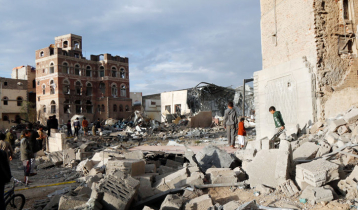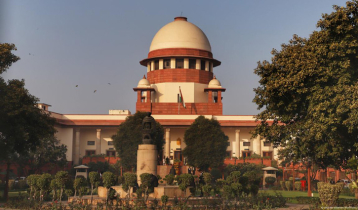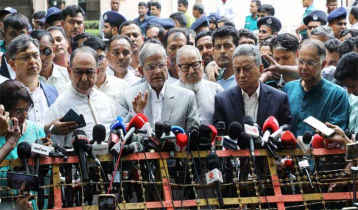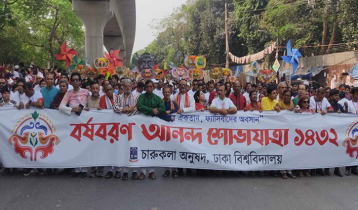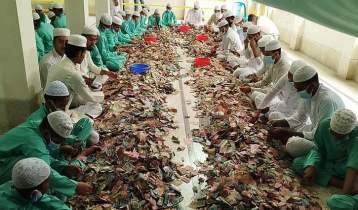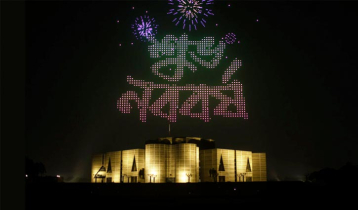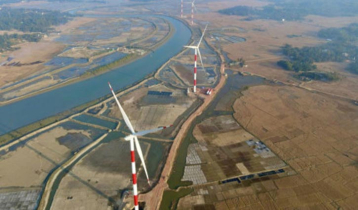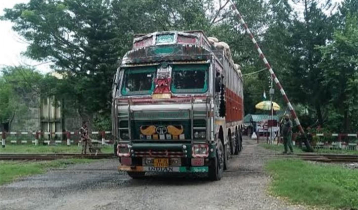Lightning strikes increasing due to climate change
Md Nazmul Islam Faruque || risingbd.com

There are many changes in the weather of Bangladesh now. People were seen suffering due to intense heat a few days ago. However, there have been severe storms, hailstorms, and lightning for a few days in April. The lightning strikes are claiming lives. At the beginning of May, eight people died across the country due to the lightning.
Experts said that due to the impact of climate change, the frequency of lightning strikes has increased. At the same time, the death toll is also increasing day by day. If people become alert, then the rate of death in lightning strikes will be much lower.
According to the sources from the Meteorological and Disaster Management Department, there was rain in different parts of the country on May 18. Four people including a mother and son were killed in Narsingdi, two in Tangail, a housewife in Gazipur, and one killed in Barguna. Around 100 people were killed in the last one month. Most of them were farmers and laborers.
According to experts, the number of deaths due to lightning strikes is increasing day by day due to the impact of climate change, increasing temperature, lack of adequate trees, and lack of advanced warning systems.
Experts opined that the rainy season in Bangladesh is from June to October. The warmest weather in the country is from March to May. This time is considered as the 'peak time' of lightning strikes. A lot of water vapor is produced at that time due to the high temperature. Water vapor acts as the main force of lightning. The more water vapor there is, the more thunderclouds form and more frequent lightning strikes occur.
Trees were cut down to set up factories. The rate of cutting trees has an impact on climate change. On the other hand, the heat is increasing resulting hailstorms and lightning. The experts said that the people should be more careful and aware to remain safe from lightning strikes.
Md Zillur Rahman, Professor of the Environmental Science Department, University of Dhaka, said the temperature in the southern and hilly regions of the country has increased. As a result, lightning strikes also have increased. In places where the lightning strikes are already high, there will be more now while the areas where fewer lightning strikes take place, will increase now.
Shahidul Islam, Professor of Geography and Environment Department, University of Dhaka, said that there will be more thunderstorms in the current season due to the severe heat wave. So, it's important to become alert.
He said trees have been cut down in many places due to setting up factories. There is no high place where lightning could strike first. That is why, the lightning strikes could take place in very low-lying areas. As a result, people are dying due to the lightning.
Lightning forecasting can be set up to stay safe from lightning strikes. Local authorities can take effective measures to take people to safe shelters, he said.
The government has taken a project to install about 7,000 lightning-preventing rods and build shelters in 15 districts of the country, according to the Department of Disaster Management.
According to the data from the Department of Disaster Management, the deaths due to lightning strikes have increased in Bangladesh in the last 7 years following the impact of climate change. A total of 318 people were killed by lightning in 56 districts last year. More than 50 were injured by the lightning strike. Around 300 people died in 2022. Besides, 179 people died in 2011, 170 in 2012, 185 in 2013, 170 in 2014, 226 in 2015, 391 in 2016, 307 in 2017, 359 in 2018, 198 in 2019, 255 in 2020 and 314 in 2021 due to lightning strikes.
Lightning strikes and deaths are high in 16 districts of the country. The districts are Sylhet, Sunamganj, Habiganj, Kishoreganj, Netrakona, Sirajganj, Mymensingh, Dinajpur, Pabna, Naogaon, Bogra, Chapainawabganj, Rajshahi, Jamalpur, Gaibandha and Tangail.
Around 5,600 people died in lightning strikes in the country from 1990 to 2022. The death rate has increased in the last seven years.
According to a research paper titled 'Lighting Fatalities in Bangladesh from 1990 to 2016' published in the Journal of the American Meteorological Society, the highest number of people died in Bangladesh due to morning and afternoon thunderstorms. Temperatures rise from 10 a.m. to noon. The causes of lightning strikes are more prevalent at that time.
N. F./Nasim

















